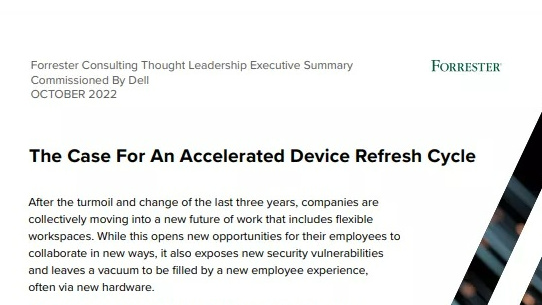Collaboration isn’t just about tech
Ignore ‘set it and forget it’ - collaboration is about hearts and minds


Collaboration is one of the biggest business trends of the last few years, and companies all over the world are rushing to jump on the bandwagon. In fact, a recent report from McKinsey estimates that implementing tools to enable effective collaboration can improve a company's productivity by 20 to 30%.
It can be tempting to think that building an agile, collaborative company is all about what technology you put in place and that your company can make that leap simply by rolling out tools like Google Docs and Slack. This has been reflected in a survey from Oracle, which found that 24% of employees in IT believe that a lack of technology to enable collaboration is one of the primary barriers to wider company innovation.
However, it's not all about the tools that are put in place; getting the right workplace culture is just as big a part of successful collaboration efforts as technology, if not more so. Nailing the cultural piece can ensure that your collaboration projects take root within the organisation, while neglecting it can often mean that any efforts to encourage collaborative working are swiftly forgotten about.
In fact, collaborative tech is entirely dependent on employees changing the way they think about work in order for it to function. Take platforms like Slack, for example; while it has the potential to completely change the way an organisation works, it can't do any good if employees simply default to using email for all their internal communications.
Instead, organisations must fundamentally shift their mindsets. According to Gartner's Five Principles for Leading an Agile Culture', one of the fundamental changes that business need to make in order to embrace collaboration and business agility is to adopt an adaptive, rather than a prescriptive approach to problems: "Instead of asking Why can't it be done?' people in an agile culture are empowered to seek answers to the question How can it be done?'"
Rather than just dropping new processes and technology on employees, companies need to work on making sure that their staff understand the reasons why these technologies are being implemented, and what the intended goal is. So, instead of simply announcing that you're switching from an on-prem Office deployment to Google apps, the CIO should be educating the workforce about the benefits this will bring.
"It's not sufficient for the CIO to roll out a unified communications solution," Forrester principal analyst Dan Bieler said; "technology solutions alone do not change business processes or support employees' changing collaborative behaviour let alone alter business models. A modern collaboration strategy requires CIOs to make organisational adjustments in addition to technology planning."
Get the ITPro daily newsletter
Sign up today and you will receive a free copy of our Future Focus 2025 report - the leading guidance on AI, cybersecurity and other IT challenges as per 700+ senior executives
"Most change management focuses on the business context, process and role changes, and transitioning employees through training and new measurements," agreed Gartner research director Bard Papegaaij. "This approach may be fine for addressing the organisational machine,' but it doesn't adequately address the human aspects."
Technology can only do so much
Similarly, another important element to bear in mind is that technology can only do so much - a huge part of collaboration is in how employees interact with each other in person. Many of the key practices that truly collaborative businesses use - scrum meetings, smaller, more agile team structures and increased individual autonomy, for instance - are all non-technical.
"Collaboration is a two-way street," wrote Delphi president Gary Audin. "Remember that when you collaborate, others are involved so you need to consider their time and the best media to collaborate with them. How you collaborate, your behaviour and the behaviour of others during the collaboration event will impact the efficiency."
These new cultural practices are widely regarded as essential for building collaboration into businesses. Not only do they bring people together to talk about what's happening within the business on a regular basis, but they also normalise through repetition the idea of working closely together with the rest of the business.
This enforced repetition of collaborative practices is crucial to establishing a new culture within the business. Left to their own devices, workers are likely to default back to the previously established methods of working that they're accustomed to using. Forcing staff to use collaborative tools and practises, however, will eventually ensure that they adopt collaborative processes in general.
According to agile development guru and independent product design consultant Jeff Patton, "while culture doesn't dictate a precise process, cultural values supported by teaching structures embedded in cultures and enforcement structures such as norms and mores all lead to a commonly understood process.
However, it's not necessarily an easy task. In many cases, businesses will need to change the way they are structured before they can start taking full advantage of collaborative principals. Siloed teams and departments are fundamentally incompatible with collaboration, and walls between different areas of the business need to be broken down in order for it to firmly take root.
It can be tempting to focus on getting the technology in place, assuming that the cultural changes will naturally follow. That's understandable; cultural change is hard, and the prospect of spearheading a complete reorganisation of the way your organisation thinks and acts can be a daunting one. But if you want your collaboration efforts to be a success, it's something that must be done, and a difficult task that must be faced head-on.
This article was originally published in June 2017 and has since been updated to reflect more accurate statistics.
Adam Shepherd has been a technology journalist since 2015, covering everything from cloud storage and security, to smartphones and servers. Over the course of his career, he’s seen the spread of 5G, the growing ubiquity of wireless devices, and the start of the connected revolution. He’s also been to more trade shows and technology conferences than he cares to count.
Adam is an avid follower of the latest hardware innovations, and he is never happier than when tinkering with complex network configurations, or exploring a new Linux distro. He was also previously a co-host on the ITPro Podcast, where he was often found ranting about his love of strange gadgets, his disdain for Windows Mobile, and everything in between.
You can find Adam tweeting about enterprise technology (or more often bad jokes) @AdamShepherUK.
-
 Bigger salaries, more burnout: Is the CISO role in crisis?
Bigger salaries, more burnout: Is the CISO role in crisis?In-depth CISOs are more stressed than ever before – but why is this and what can be done?
By Kate O'Flaherty Published
-
 Cheap cyber crime kits can be bought on the dark web for less than $25
Cheap cyber crime kits can be bought on the dark web for less than $25News Research from NordVPN shows phishing kits are now widely available on the dark web and via messaging apps like Telegram, and are often selling for less than $25.
By Emma Woollacott Published
-
 'Digital hide-and-seek': Workers are wasting hundreds of hours a year sourcing the information they need to carry out their role
'Digital hide-and-seek': Workers are wasting hundreds of hours a year sourcing the information they need to carry out their roleNews Knowledge workers globally are wasting a quarter of their working week tracking down information, new research from Atlassian has revealed.
By George Fitzmaurice Published
-
 Untethered: How CIOs and CISOs are paving the way for the new hybrid workforce
Untethered: How CIOs and CISOs are paving the way for the new hybrid workforceWhitepaper Effective techniques to transition from exposed legacy infrastructure to an effective zero trust strategy
By ITPro Published
-
 Unlocking the power of your digital services
Unlocking the power of your digital servicesSponsored Businesses have invested significant cash into technology since COVID-19, but are they really getting their money's worth?
By ITPro Published
-
 Delivering fast and secure digital experiences for the modern hybrid workforce
Delivering fast and secure digital experiences for the modern hybrid workforceWhitepaper A new approach to digital experience monitoring that can monitor the health of all systems
By ITPro Published
-
 Collaboration is the glue that holds your business together
Collaboration is the glue that holds your business togetherSPONSORED A combination of productivity tools and cloud telephony can enable the best from your workforce
By ITPro Published
-
 The future of work and the forgotten workforce
The future of work and the forgotten workforcewhitepaper How to deploy a mobile-first strategy so no one gets left behind
By ITPro Published
-
 The case for an accelerated device refresh cycle
The case for an accelerated device refresh cycleWhitepaper Achieving a more cost-effective device lifecycle overall
By ITPro Published
-
 Employees are choosing how they work
Employees are choosing how they workWhitepaper And with the right secure digital strategy, this could be a great thing for your business: today and far into the future
By ITPro Published